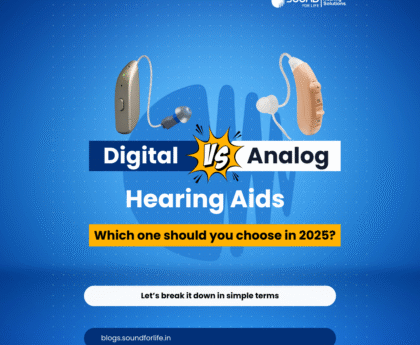The good news is that for Central Government employees and pensioners who have hearing loss CGHS reimburses the cost of hearing aids. This advantage does have certain restrictions, though. Although previous clearance is required, hearing aids are listed as reimbursable medical equipment under CGHS. This means CGHS beneficiaries must first get approval, then purchase the hearing aid, and finally submit a claim for reimbursement. The reimbursement is subject to CGHS guidelines, including cost ceilings and eligibility criteria. The latest official details were outlined in a government memorandum dated December 1, 2020, which explains the procedure and limits clearly.
Who Is Covered? (Employees & Pensioners)

Many different types of people can get medical benefits under the Central Government Health Scheme (CGHS). It includes all Central Government retirees and their families, as well as all workers paid from Civil Estimates and their dependent family members. However, members of the armed forces and railroads are often left out. You and your qualified dependents can get CGHS benefits if you are registered in CGHS or are paying the CGHS subscription. These benefits are more comprehensive and supportive of a range of health requirements since they include more than just hospital treatments or medications; they also include the provision of hearing aids.
Types of Hearing Aids Covered
Under the updated CGHS rules, modern digital hearing aids are eligible. The 2020 Office Memorandum fixes ceiling rates per ear as follows:
● ₹8,000 for a digital Behind-The-Ear (BTE) hearing aid (includes earpiece/mould).
● ₹9,000 for a digital In-The-Canal (ITC/CIC) hearing aid (includes custom shell).
These costs include all taxes and a 3‑year warranty. Importantly, analog or “body-worn” models are no longer reimbursed, since they’ve been declared obsolete. CGHS does not restrict specific brands – what matters is the type of device approved by CGHS. ENT specialists must recommend the suitable category based on your audiogram, and CGHS pays up to the ceiling for that category (not for a brand name).
Getting Permission and Prescription

You cannot just buy a hearing aid and claim it without authorisation. First, get a referral. Visit your CGHS Wellness Centre (or AMO/AMA for CS(MA) cases) and request a referral to a CGHS or government ENT specialist. Take your original CGHS card when you go. The ENT doctor will perform an audiometric test and, if a hearing aid is needed, recommend the type best for you. The ENT’s recommendation (with the audiogram) must specify the approved category of aid (digital BTE or ITC/CIC).
Next, you must obtain permission to purchase. For pensioners, this comes from the Additional Director (Zonal) of CGHS in your city; for serving employees, it comes from your Head of Department/Office. You must submit the ENT recommendation and sign an undertaking that you have not obtained a hearing aid at government expense in the last 5 years. (Replacement is allowed only after a 5‑year gap.) Keep a copy of this permission letter – you will need it for reimbursement.
Reimbursement Process, Documents and Limits

After you buy the hearing aid (with the approved specifications), you can file for reimbursement. Who to submit to: Pensioners send the claim (via their dispensary CMO) to the CGHS Zonal Office. Serving employees submit the claim to their own Ministry/Department or Autonomous Body.
Documents needed: In general, the claim form must include:
● Original Permission Letter (to purchase the hearing aid)
● Copy of CGHS Card (beneficiary’s card)
● Original Invoice/Bill for the hearing aid (showing seller’s name, model, and detailed cost)
● Empty carton/box of the hearing aid with its label (to verify the model supplied)
You should also keep the ENT prescription/audiogram and CGHS referral handy; while not always listed, these are useful for record and may be asked for.
As for timelines, CGHS generally expects claims to be filed promptly. In practice, try to submit your claim within a few weeks of purchase. (CGHS rules require explanations if a claim is delayed more than 90 days after treatment.) Once submitted, processing can take a few weeks depending on your dispensary and zone.
Claim limits: CGHS will reimburse the lesser of (a) the actual price you paid or (b) the CGHS ceiling rate per ear. For example, if your approved BTE aid cost ₹7,500, you’d get the full ₹7,500 (since it’s under the ₹8,000 cap). If it cost ₹10,000, you’d only be reimbursed ₹8,000. Note that the ceiling includes taxes and warranty; batteries and maintenance are not covered by CGHS (you pay for those).
Recent Policy Updates
The latest policy is the Dec. 2020 Office Memorandum (Ministry of Health) on hearing aids. This revised both the ceiling rates and the procedure (superseding the old 2015 orders). It took effect immediately and is valid “until further revision”. As of 2025, there’s been no newer CGHS update on hearing aids, so these rules still apply.
Key points from that update: digital aids only (no analog), fixed ceiling rates, ENT referral mandatory, and replacement only after 5 years. For example, the memo clearly states that beneficiaries are eligible “as per the categories approved under CGHS and not as per any brand name”, and spells out all documentation for claims.
Special Conditions and Exclusions
A few important conditions to remember:
● One hearing aid per ear per 5 years. You can’t claim again until 5 years have passed from your last CGHS-subsidized aid. After 5 years, you can apply again (no condemnation certificate needed).
● Maintenance by you. CGHS only pays to acquire the aid; routine repairs and batteries are your responsibility.
● Not for casual use. You must have clinically significant hearing loss as certified by the ENT specialist. Hearing aids for mild or temporary issues (e.g. ear infection) would not qualify.
● Excluded beneficiaries. If you work in the Railways or Armed Forces, CGHS rules don’t cover you (they have separate schemes). Also, CGHS usually excludes Delhi Police and other non-civilian categories.
● Prohibited charges. Don’t pay “extra” over and above the approved price. CGHS pays only up to the ceiling. If you buy a more expensive model, the balance is not reimbursable.
Helpful Tips
1: Have the ENT specialist stamp and sign the audiogram report when they recommend the aid. This makes the claim smoother.
2: When purchasing Hearing Aid, ask the vendor to give you the hearing aid in its original labeled box (CGHS requires this to verify the model).
Some Frequently Questions
Q: How often can I replace a hearing aid under CGHS?
A: Only once every 5 years, unless there’s a rare medical reason. (After 5 years, you simply apply again; no need for a destruction certificate).
Q: My spouse needs hearing aids too. Can CGHS cover other family members too?
A: Yes. Every CGHS card holder is eligible independently, as are any family members whose names are listed on the card. You can claim hearing aids for each qualifying person (subject to ceilings and approvals).
Q: How much will CGHS reimburse if I pay ₹9,500 for a BTE aid?
A: Up to ₹8,000 for a BTE aid per ear would be reimbursed. The extra ₹1,500 is not covered. So you’d get ₹8,000, assuming all paperwork is in order.
Q: Are cochlear implants covered?
A: No, CGHS explicitly covers hearing aids only according to the CS(MA) Rules. Since they come under separate medical categories, cochlear implants and surgical procedures are not covered by this hearing aid coverage.
Q: What if I miss the 15-day submission window?
A: Certain amount of flexibility is permitted by CGHS regulations. If your claim is delayed for up to ninety days, you should explain the reason when you file it. It is usually recommended to file the MRC within a month after the purchase in order to minimise any issues. Claims must be supported if they are more than 90 days late.
What to do
By following the official CGHS rules above and keeping your paperwork complete, you should be able to get hearing aids reimbursed through CGHS. For the latest details, always check the CGHS website or consult your City Zonal Office.
Sources: Official CGHS/Health Ministry guidelines and credible summaries of CGHS benefits (as of 2025).





